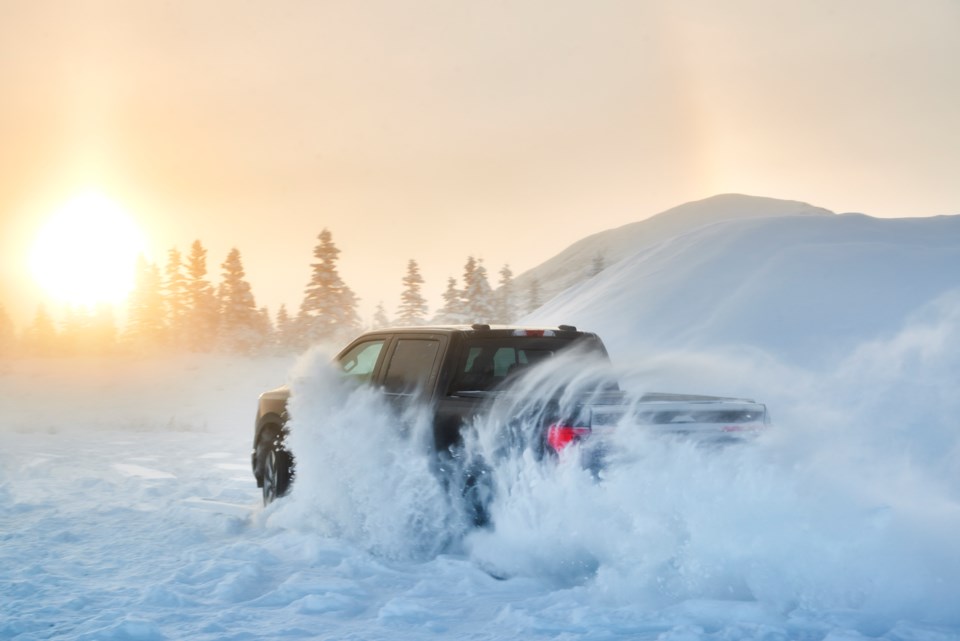Like a lot of Canadians, I’m still a ways from making the shift to a fully electric vehicle. It’s not for lack of wanting to lower my transportation emissions; I’m all for reducing my dependence on petroleum. But in my household, in the current economic climate, the numbers aren’t adding up. Not yet, anyway.
The federal government has a particularly ambitious zero-emission vehicle sales target, specifically, 100-per-cent zero-emission vehicle sales by 2035 for all new light-duty vehicles (light-duty vehicles being all passenger vehicles including cars, SUVs and pickup trucks).
Many people—including economists and consultants at automotive research firms—don’t believe this target is realistic. The biggest barrier is that EVs are too expensive and are skewed to the luxury market. Seeing Teslas parked in the driveways of second-home mansions around Whistler supports this hypothesis.
The other concern is charging infrastructure. Whistler has 42 charging spots in eight locations around town, plus a bunch of spots around businesses and hotels. So it looks like we’re reasonably well-supported for our visiting EVs. But as soon as you get off the beaten track of B.C.’s major highways, the pickings get much more sparse. I wouldn’t expect a charging station halfway over the Hurley, but it would be nice to get to the Chilcotin backcountry and back without the dreaded range anxiety.
Let’s get back to the practicalities. If I want to keep hauling a snowmobile around on certain days of the winter, I’m going to need an electric truck. This category of EVs is especially sparse with offerings, and nothing really that affordable. The most approachable is the F-150 Lightning, which retails for just under $60,000. From there, brands like Cybertruck and Rivian start to approach the silly price range of about $100,000.
The F-150 Lightning seems a solid choice, though if you intend to drive into the boonies on a regular basis you’d probably want the version with the big battery to extend the “ideal conditions” advertised range from 386 kilometres to 515 km. So add another $16,000 for that. Then factor in the winter driving conditions. We don’t really get crazy, extended cold spells on the West Coast very often, but let’s imagine my fictitious F-150 Lightning needs to do some driving in our recent -25 C cold snap. A writer for driving.ca reviewed the F-150 Lightning (platinum trim with extended range) in Ontario winter conditions and—like every EV—put down its fluctuating range to the outside temperature, how warm occupants like their cabin temperature (heating an EV is a lot more energy intensive, given the motor does not produce much heat at all), and what you’re hauling. The tester’s experience at -12 C with that big battery was a reduction from the advertised range of 515 km down to 320 km—fine for getting to Vancouver and back on a single charge, but if I wanted to ski in Fernie on a winter road trip, that’s a lot of charging stops. If you want to haul trailers full of toys, that range decreases even further.
Not everyone needs a truck, but lots of people prefer the safer handling of all-wheel drive (AWD) on winter roads. Those EV options aren’t especially cheap, either, with models like the Volkswagen ID.4 Pro starting at just under $60,000 (the rear-wheel drive version is about $10,000 less, for comparison). Models like the Subaru Solterra, Hyundai Ioniq 5 and Kia EV6 are all in the same price ballpark. If AWD isn’t a deciding factor, there are plenty of 2WD electric options out there, with many hitting the used market. But the rebates are considerably less for used EVs, and consumers need to be wary of battery health.
Then there’s the issue of getting an EV charger installed in my residence. I don’t own the home I live in, so if my landlord isn’t interested in future-proofing their property, I may have to make that investment on my own and leave the charger behind if I move in the next few years. Strata buildings in Whistler can get EV charging infrastructure going, but that sort of expenditure often needs to pass with a vote from a majority of owners. Good luck with that.
This all might sound pessimistic, but I’m still hopeful EVs can eventually get to where they need to be; cheaper, with faster-charging batteries, and enough charging stations to quell a non-metropolitan Canadian’s range anxiety. Technology like solid-state batteries I find particularly exciting given the claimed range and quick charge time, but that tech isn’t slated to arrive to the mass market until at least the end of the decade.
Meanwhile, I’ll keep riding my e-bike for short trips and use the gas guzzler as sparingly as possible. More on that soon.
Vince Shuley is feeling like it’s winter again. For questions, comments or suggestions for The Outsider, email [email protected] or Instagram @whis_vince.




